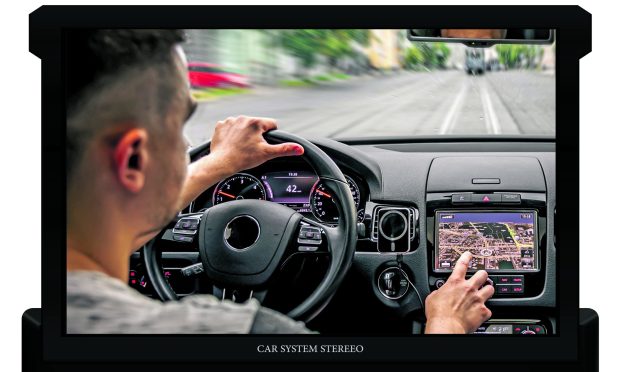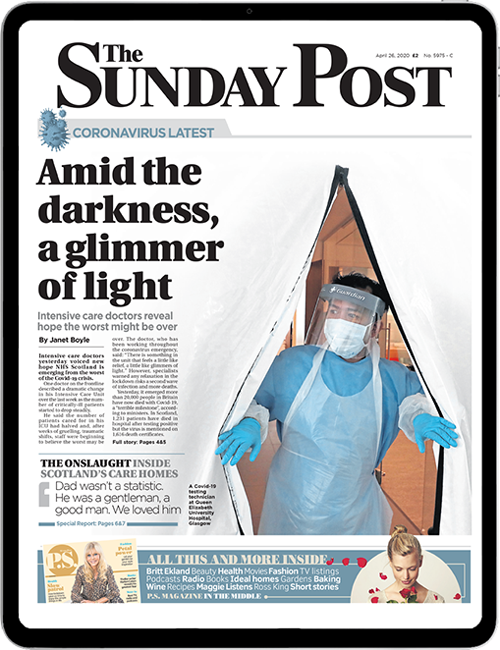
Motorists are being so distracted by modern touch screen satnav that they can take their eyes off the road for 16 seconds while driving with potentially fatal consequences, new research has found.
A report published in a European science journal says motorists are increasingly driving blind as they key in addresses to navigate journeys as well as changing the radio station or adjusting the heating.
Professor Emeritus of Biological Psychology Kenneth Hugdahl, says car designers working on new vehicles with ever increasing touch screen functions do not consider how human brains work.
‘A split second is all it takes’
Professor Hugdahl, speaking in the journal Science Norway, urged car designers to consider how we interact with such technology.
The brain specialist from Bergen University warns that human brains handle one piece of information at a time, and it is impossible to focus on a car touch screen and traffic at the same time.
“A split second is all it takes to end up in a disastrous situation,” says Professor Hugdahl.
His warning against being distracted by touch screens is backed by the Scottish Government department Transport Scotland.
It is alerting drivers to the risk of serious accidents.
The call to motorists to stay vigilant on the roads comes as car manufacturers are moving away from the knobs and push buttons which appeared in cars until recently.
One leading brand of luxury car now has an expansive 56-inch touch screen.
Further evidence of distracting drivers with screens comes from Norwegian researchers who assessed how long it took to complete tasks while driving.
The investigation, commissioned by the Norwegian Council For Road Safety, recorded the eye movements and attention distribution in 44 drivers who used a touch screen at the wheel.
It found that entering an address while driving and searching for a music channel were the most demanding actions.
Dr Ann-Helen Hansen, special advisor, communications and campaigns, at Trygg Trafikk (the Norwegian Council for Road Safety) warns drivers of the immense danger when distracted by screens.
Speaking to Science Norway, she said: “When you take your eyes off the road, you’re essentially driving blind.
“The longer the task takes, the longer you’re effectively driving with your eyes closed.”
She adds that surveys show that driver inattention is a contributing factor in one in every three fatal accidents.
New rules
The warning over dangerous distraction from car touch screens comes as crash test organisation Euro New Car Assessment Programme (Euro NCAP) is planning to introduce rules around controls inside new cars in 2026.
Euro NCAP say: “Being distracted while driving is a main contributor to traffic accidents. It is recognised that poor interaction design can contribute to unnecessarily long glances off the road view while performing a driving or non-driving related task.
“To facilitate safe driving practices, Euro NCAP will introduce its first-ever assessment protocol for General Vehicle Controls, as part of the 2026 Rating Scheme.”
It plans to examine the design of vehicle safety controls and encourage safer ways to operate them.
Voice commands are being suggested as a way forward, if obstacles posed by understanding regional accents can be overcome.
Transport Scotland is urging drivers to avoid screen distractions in the interests of safety.
A Transport Scotland spokesperson said: “Most vehicles have technology designed to assist drivers, but a lot of the equipment and the use of mobile phones can cause distractions.
“Taking your eyes off the road can be fatal, as it only takes a split second to cause a serious collision.”
It directs motorists to its Road Safety Scotland website for guidance on accident-free road trips.

Enjoy the convenience of having The Sunday Post delivered as a digital ePaper straight to your smartphone, tablet or computer.
Subscribe for only £5.49 a month and enjoy all the benefits of the printed paper as a digital replica.
Subscribe